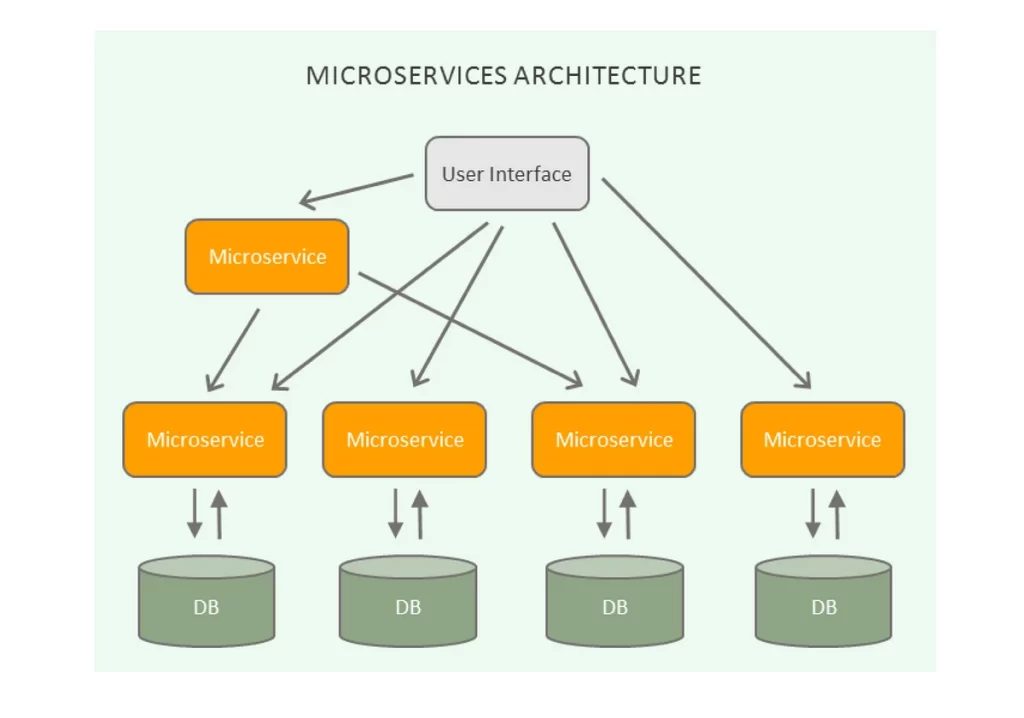
In the rapidly evolving landscape of IT, businesses are constantly seeking innovative ways to enhance their operations, improve scalability, and increase efficiency. One of the most transformative approaches that have emerged in recent years is the adoption of microservices architecture. This modern method of structuring IT infrastructure has revolutionized the way organizations develop, deploy, and manage their applications. In this blog, we will explore the significance of microservices in IT infrastructure, their benefits, and why they are becoming the go-to solution for companies aiming to stay competitive in the digital age.
The concept of microservices has been gaining traction for over a decade, but its true potential is only now being realized. Traditional monolithic architectures, where applications are built as a single, cohesive unit, have served businesses well in the past. However, as the complexity and scale of applications grow, monolithic systems often become cumbersome, difficult to maintain, and challenging to scale. This is where microservices come into play.
Microservices architecture breaks down applications into smaller, independent services that can be developed, deployed, and scaled independently. Each service performs a specific function and communicates with other services through well-defined APIs. This modular approach offers a plethora of advantages over monolithic systems, making it an attractive option for modern IT infrastructure.
Importance of Microservices in IT Infrastructure

Microservices have become crucial in modern IT infrastructure due to their ability to address the limitations of traditional monolithic architectures. Here are some key reasons why microservices are important:
Scalability
One of the most significant advantages of microservices is their ability to scale. In a monolithic architecture, scaling the application often means scaling the entire system, even if only one component requires additional resources. Microservices allow organizations to scale individual services based on demand, resulting in more efficient resource utilization and cost savings.
Flexibility and Agility
Microservices enable organizations to adopt a more flexible and agile approach to development. Each service can be developed, deployed, and updated independently, allowing teams to work on different parts of the application simultaneously. This accelerates the development process and facilitates continuous integration and continuous deployment (CI/CD) practices.
Improved Fault Isolation
In a monolithic system, a failure in one component can bring down the entire application. Microservices architecture, on the other hand, isolates faults to individual services, minimizing the impact on the overall system. This improves the reliability and availability of applications.
Technology Diversity
Microservices allow organizations to use different technologies and programming languages for different services, based on their specific requirements. This promotes the use of the best tools for each task and encourages innovation within the development team.
Read More : All You Need To Know About Full Stack Web Development
Benefits of Microservices IT Infrastructure

The adoption of microservices architecture brings numerous benefits to IT infrastructure. Let’s delve into some of the most notable advantages:
Enhanced Scalability and Performance
Microservices enable horizontal scaling, where additional instances of a service can be added to handle increased load. This ensures that applications can handle high traffic volumes without compromising performance. For example, during peak shopping seasons, e-commerce platforms can scale their payment processing services independently to manage the surge in transactions.
Faster Time-to-Market
By allowing development teams to work on individual services concurrently, microservices reduce the time required to develop and deploy new features. This rapid iteration capability is crucial in today’s competitive market, where the ability to quickly adapt to changing customer needs can be a significant advantage.
Continuous Deployment and Integration
Microservices support CI/CD practices, enabling organizations to deploy updates and new features more frequently and with greater confidence. Automated testing and deployment pipelines ensure that changes are thoroughly tested before reaching production, reducing the risk of errors and downtime.
Cost Efficiency
With microservices, organizations can optimize resource usage by scaling only the services that require additional resources. This targeted scaling approach leads to cost savings, as opposed to scaling an entire monolithic application. Additionally, microservices can be deployed on cloud platforms, further reducing infrastructure costs through the use of pay-as-you-go models.
Improved Developer Productivity
Microservices foster a more focused and efficient development environment. Developers can specialize in specific services, gaining deep expertise in their respective areas. This specialization enhances productivity and allows teams to deliver high-quality code more quickly.
Resilience and Fault Tolerance
The isolation of services in a microservices architecture enhances the overall resilience of the system. If one service fails, it does not necessarily bring down the entire application. Instead, other services can continue to operate, ensuring that critical functionalities remain available to users.
Ease of Maintenance and Upgrades
Maintaining and upgrading a monolithic application can be a daunting task, as changes to one part of the system can have unintended consequences elsewhere. Microservices, being independent units, can be updated and maintained with minimal impact on other services. This simplifies the process of applying patches, implementing new features, and addressing technical debt.
Enhanced Collaboration and Ownership
Microservices promote a culture of ownership and accountability within development teams. Each team is responsible for the entire lifecycle of the services they develop, from design to deployment and maintenance. This sense of ownership fosters collaboration, innovation, and a greater commitment to delivering high-quality software.
For businesses seeking to implement microservices architecture as part of their IT strategy, exploring Software Development Services can provide the necessary expertise and support to ensure a successful transition.
Real-World Examples of Microservices Success

To understand the practical impact of microservices on IT infrastructure, let’s look at some real-world examples of companies that have successfully implemented this architecture:
Netflix
Netflix is one of the most well-known examples of a company that has embraced microservices. By breaking down their monolithic architecture into hundreds of microservices, Netflix has achieved unparalleled scalability and resilience. This transformation has enabled them to handle massive amounts of traffic and deliver a seamless streaming experience to millions of users worldwide.
Amazon
Amazon’s e-commerce platform relies heavily on microservices to manage its vast and complex infrastructure. Each component of the platform, such as product search, payment processing, and order fulfillment, operates as an independent microservice. This approach allows Amazon to scale its services efficiently and innovate rapidly to meet customer demands.
Spotify
Spotify’s music streaming service utilizes microservices to deliver personalized experiences to its users. By leveraging microservices, Spotify can deploy new features and improvements quickly, ensuring that users always have access to the latest innovations in music discovery and streaming.
Microservices IT infrastructure – Challenges and Considerations

While microservices offer numerous benefits, they also come with their own set of challenges and considerations. Organizations looking to adopt microservices IT infrastructure should be aware of the following:
Complexity
Managing a large number of independent services can be complex. Organizations need to invest in robust monitoring, logging, and orchestration tools to ensure smooth operation and effective troubleshooting.
Inter-Service Communication
Microservices rely on communication between services, often over a network. Ensuring reliable and efficient communication requires careful design and implementation of APIs and messaging protocols.
Data Management
In a microservices architecture, data is often distributed across multiple services, each with its own database. Managing data consistency and integrity across these services can be challenging and may require the use of advanced techniques such as event sourcing and CQRS (Command Query Responsibility Segregation).
Security
Securing a microservices architecture involves protecting multiple entry points and ensuring secure communication between services. Organizations must implement strong authentication and authorization mechanisms to safeguard their systems.
Cultural Shift
Adopting microservices requires a cultural shift within the organization. Teams need to embrace a DevOps mindset, with a focus on collaboration, continuous improvement, and ownership of the entire service lifecycle.
Conclusion
In conclusion, the adoption of microservices is not just a trend but a strategic move towards a more efficient and future-proof IT infrastructure. As more companies recognize the potential of microservices, we can expect to see a continued shift towards this modern approach, shaping the future of application development and deployment.
